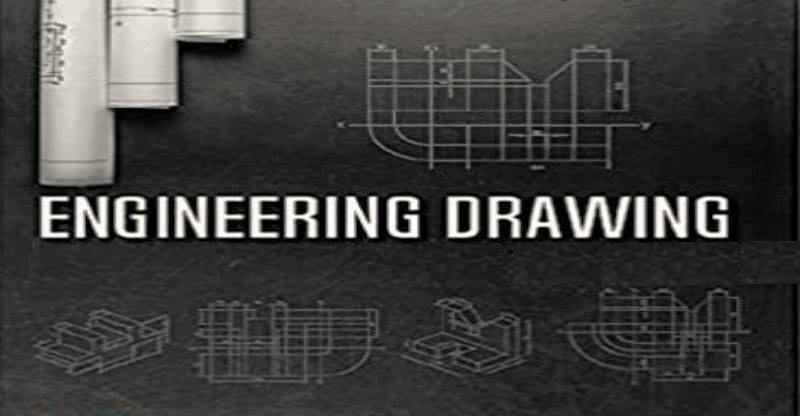DRAWING INSTRUMENTS – Their standard and uses
The following are the commonly used Drawing Instruments in a drawing office.
DRAWING BOARD:
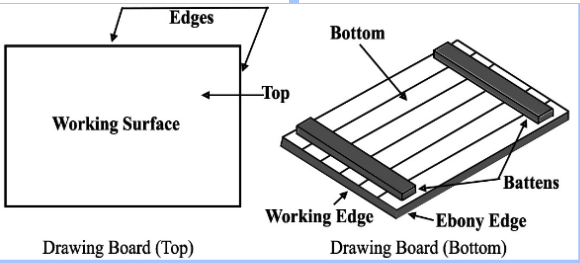
Drawing board is one of the main equipment of Draughtsman. It is used for supporting the drawing paper/tracing paper for making drawings. It is made of well seasoned wood strips of about 25 mm thick or Masonite, free from knots and warping. It should be softer enough to allow insertion and removal of drawing pins. Two battens are fastened to the board by screws, in slotted joints. They prevent warping and at the same time permit expansion and contraction of the strips due to the change of moisture in the atmosphere.
Standard drawing boards are designated as follows as per IS:1444-1989.
| S. No. | Designation | Size (mm) |
| 1 | D0 | 1500 x 1000 x 25 |
| 2 | D1 | 1000 x 700 x 25 |
| 3 | D2 | 700 x 500 x 15 |
| 4 | D3 | 500 x 350 x 15 |
One of the shorter edges of the drawing board, is provided with an “ebony edge” (hard wood) fitted perfectly straight. The working edge (ebony) must be straight.
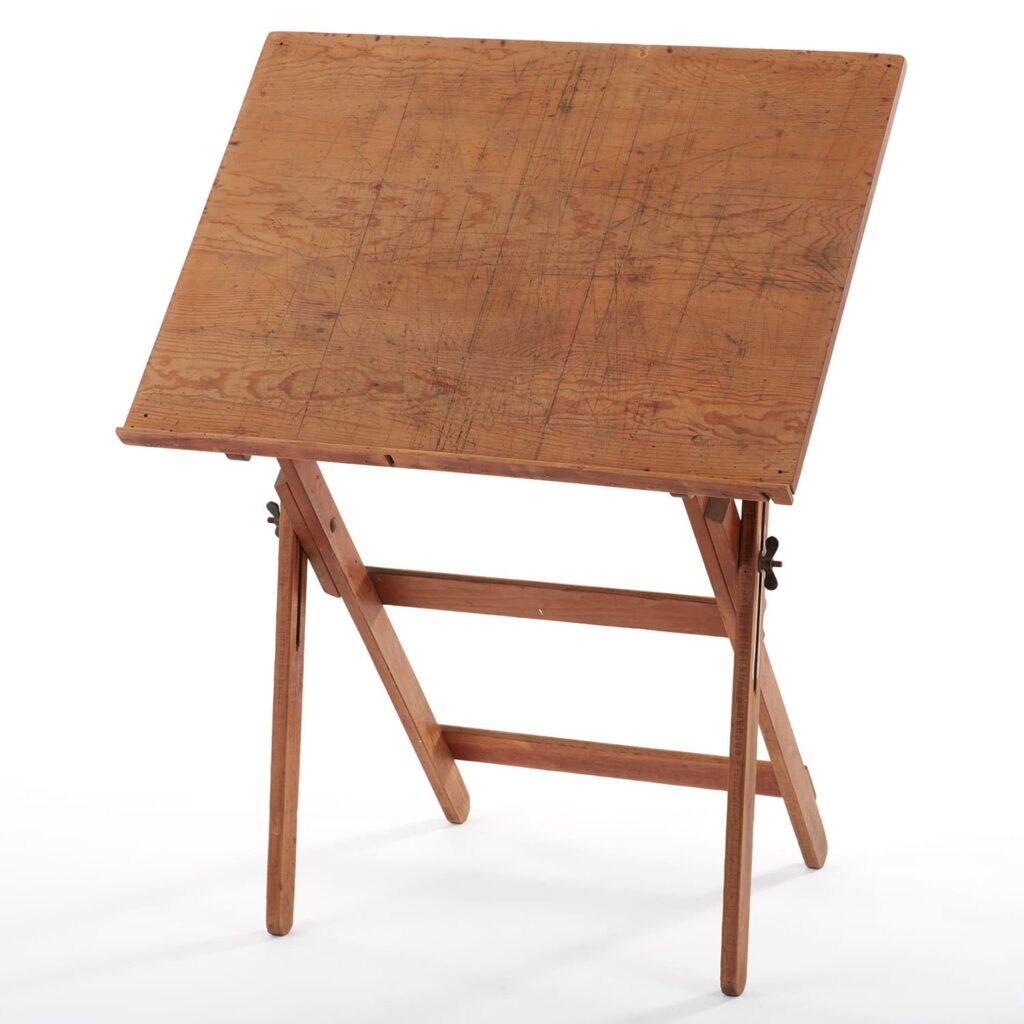
Now-a-days the drawing boards are available with laminated surfaces. The flatness can be checked by placing a straight edge on its surface. If no light passes between them, the surface is perfectly flat.
T SQUARE:
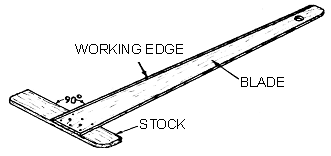
It is one of the drawing instruments which is of ‘T’ shape, made of well seasoned wood. It has two parts., head and blade. One of the edge of the blade is the working edge. The blade is screwed to this head such that the working edge is at right angle to head.
The standard ‘T’ square are designated as follows with dimensions shown in mm; as per IS:1360-1989.
| S. No. | Designation | Blade length |
| 1 | T0 | 1500 |
| 2 | T1 | 1000 |
| 3 | T2 | 700 |
| 4 | T3 | 500 |
The ‘T’ squares is used with its head against the ebony edge of the drawing board to draw horizontal lines, parallel lines and to guide/hold the setsquares, stencils etc.
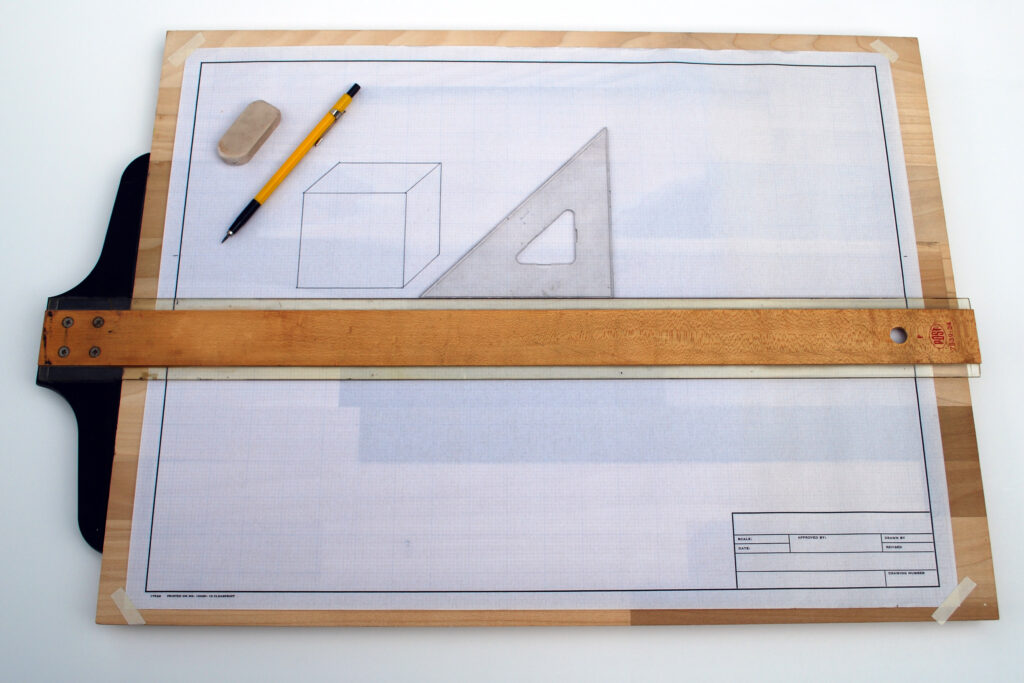
‘T’ square should never be used as a hammer or as guide for trimming papers.
DRAFTING MACHINE:
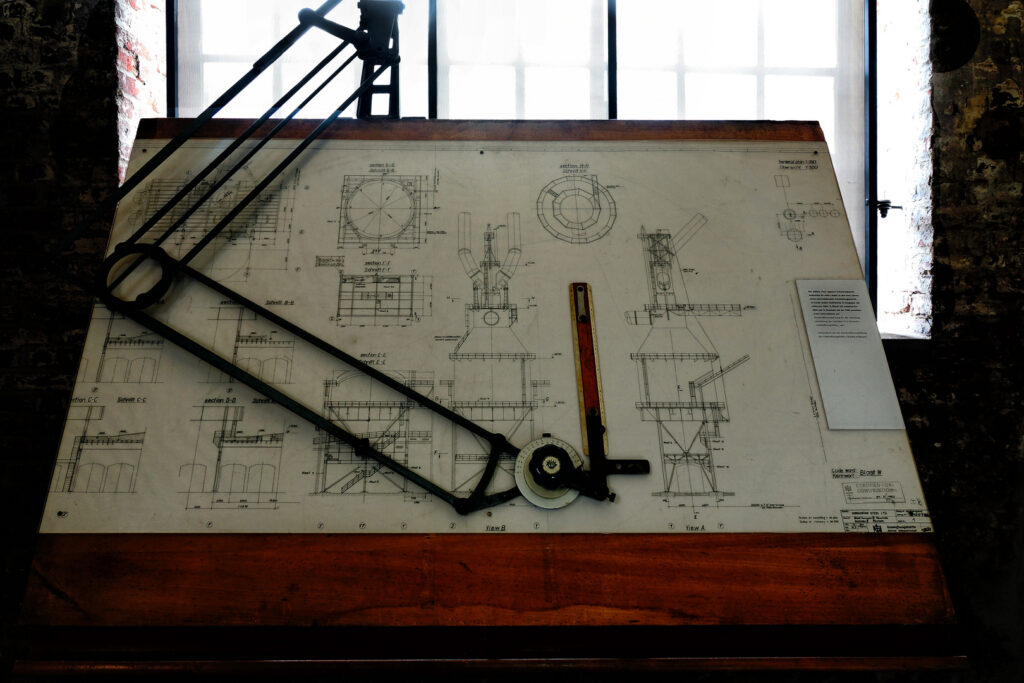
It serves the functions of a Tee square, set square, protractor and scale. They come in different sizes and a pattern called ‘Pantograph’ type. It is fitted on the top left side, edge of the drafting board, mounted on an adjustable frame or table. It requires large area of working place. The angle of the drafting board can be adjusted by pedal operating system. There are two counter weights to balance the angular position of the board and the drafting head. It is more suitable for production
drawing office.
On the other end, a protractor head H with swiveling and locking arrangement is fitted with two scales at right angles.
The protractor head has a spring loaded clutch relieving handle, which rotates and locks at 150 intervals automatically. For setting any angle other than multiples of 150, the clutch spring is released and by rotating the centre knob, the zero line is set to the required angle and the friction clutch knob is tightened. It is capable of rotating 180º, thereby any angle can be set.
The scales are beveled on both sides, graduates to 1:1 & 1:2., They can be reversed with the help of dovetail slide fitting.
There is a fine adjusting mechanism on the drafting head to set the scale parallel to the edge of the board. The scales also can be adjusted if there is any error in measuring 900 between them.
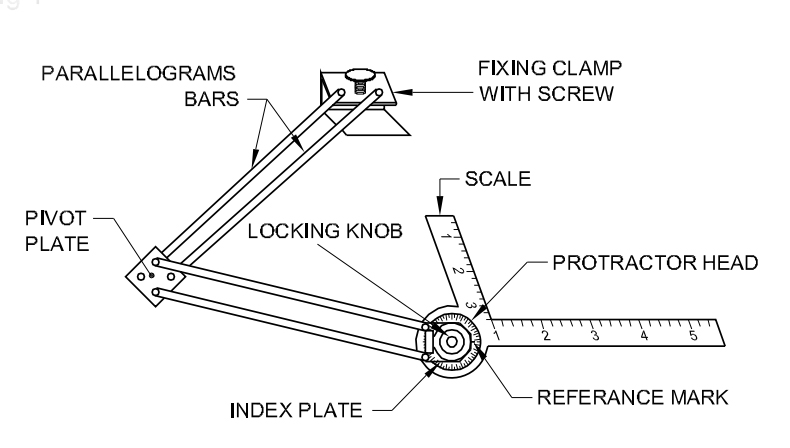
Mini drafter is an important device used for making drawing quickly& accurately. This instrument gives faster drawing as it like the purpose of T Square, Set Square, Protractor and scales.
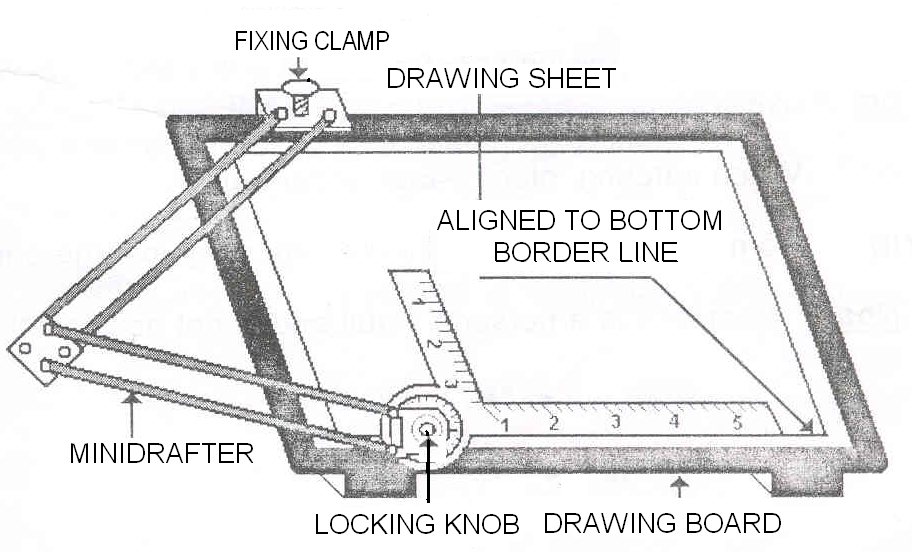
ERASING SHIELD:
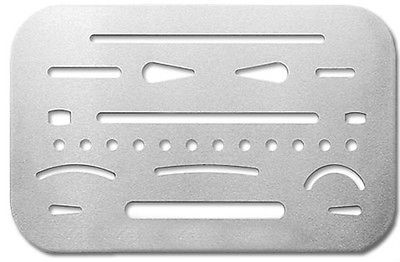
When, on a drawing, if a part of a line or some lines among many other lines need to be erased or modified, in normal way of erasing will damage the other nearby lines. In such a situation an erasing shield is effectively useful. It is a thin metallic sheet having small openings of different sizes and shapes. A suitable opening is aligned to the line to be erased and the line is removed by the eraser.
SET SQUARE:
Transparent celluloid /Plastic setsquares are preferred and are commonly used rather ebonite ones. They are two in number, each having one corner with 90°. The setsquare with 60°-30° of 250 mm long and 45° of 200mm long is convenient for use. Setsquares sometimes loose their accuracy due to internal strains. So they should be tested periodically.
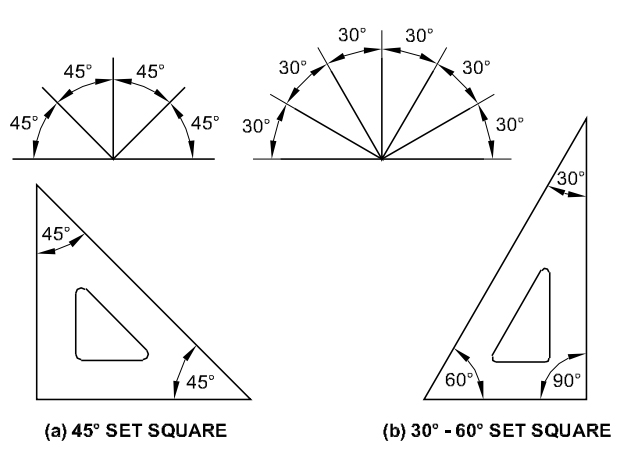
Sometimes set squares have french curves. Set squares are used to draw all straight lines except horizontal lines. It is convenient to draw horizontal lines using Mini drafter.
With the help of Mini drafter and manipulating the 45°, 30°- 60° setsquares, angular lines in the multiples of 15°; Parallel lines to a given inclined line and perpendicular to can be drawn.
Set squares with graduated, bevel edge and French curve openings are preferable. They are also used to draw smooth curves. Setsquare should never be used as guide for trimming papers.
SCALES:

Scales are used to transfer and or to measure the dimensions. They are made of wood, steel, ivory, celluloid or plastic, stainless steel scales are more durable. Different types of scales used. They are either flat, bevel edged or triangular cross-section. Scales of 15 cm long, 2 cm wide or 30 cm long 3.5 cm wide flat scales are in general use. Thin section or bevel edged scales are preferred over thick flat scales. Parallax error will be nil or least while using thin / tapered edge scales.
PROTRACTOR:
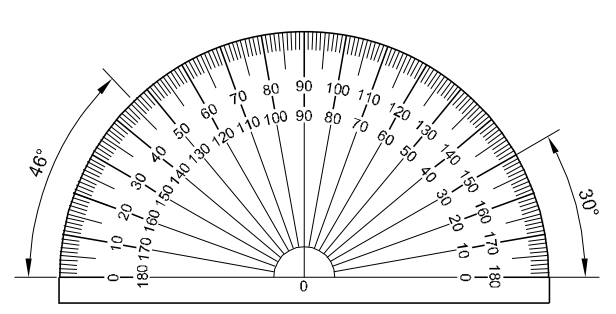
Protractor is an instrument for measuring angles. It is semi-circular or circular in shapes and is made of flat celluloid sheet. The angles can be set or measured from both sides, aligning the reference line and point ‘0’ with the corner point of the angle. Protractor can also be used to divide a circle or drawing sectors.
FRENCH CURVES:
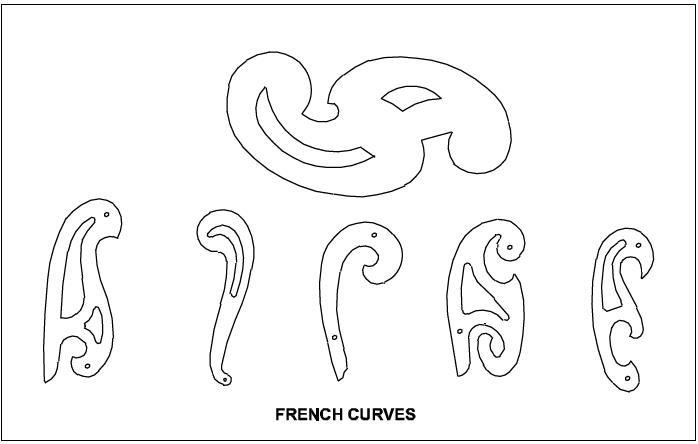
These are made in many different shapes, normally come in sets of 6,12,16 etc. French curves are best suited to draw smooth curves/ arcs (which cannot be drawn by a compass) with ease. To draw a smooth curve using french curve first set it by trial against a part of the line to be drawn, then shift it to the next portions.
RELATED VIDEOS FOR DRAWING INSTRUMENTS:
